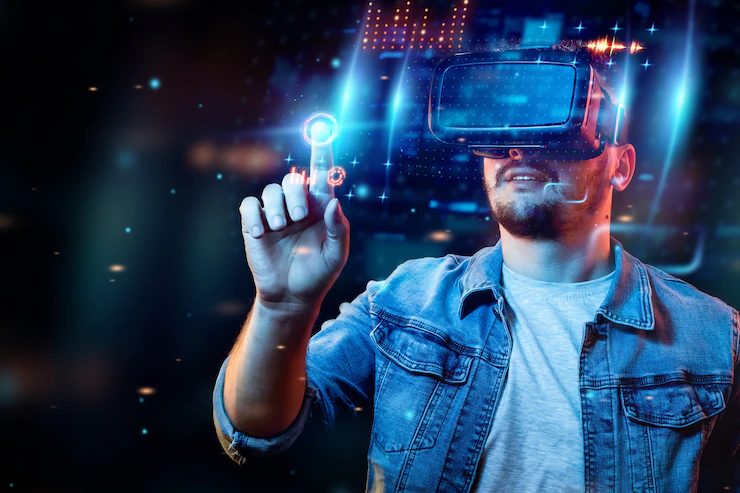5 Technology Trends Making Significant Strides In The Education Field
There?s no denying that technology plays a critically important role in assisting people in surviving this century. Without this blessing, we cannot even imagine what it would be like living in this world. It has penetrated its way into our everyday lives, making its grip firm in almost every aspect.
Today, technology integration has become indispensable for every enterprise; there?s scarcely an industry that remains unaffected by it. The education sector is no different.
We have observed a substantial change in the education model in the past two years. Today?s teaching methods are far too different from those used several decades back.
From a flipped-classroom approach to video-assisted learning, technology has re-contoured the pedagogy and learning methodologies. While educators have recognized the significance of digitization for some time now, the recent pandemic has given it a sudden stimulus and force.
What is education technology?
EdTech refers to utilizing modern tools and equipment in institutions to create a student-centric learning experience. The prime purpose of technology adoption is to improve the quality of education and provide valuable resources. With its predominant role, continuous developments have set the stage for revolutions that will nurture the younger minds.
Let?s take a deep insight at some of the education technology trends that are providing a rich learning experience for learners and reshaping the entire education sphere:
1. Gamification
The education industry is always on the lookout to impart knowledge through fun activities and make the learning experience more interactive and engaging. And the answer to this can be gamification. Gamification entails incorporating game-like elements and mechanics such as student-centric applications, webpages, and video games into the learning process.
These gimmicks tie the learners with team activities, scoring, and competitive games, thus, increasing student engagement. However, it?s relevant to note that these gamified-learning webpages and applications are the ultimate outcomes of a software engineer?s work.
But this poses the question, what is software engineering, and what do these professionals do? Software engineering is a vast field that deals with information systems, databases, programming languages, and software architecture. The professionals in this field possess the technical expertise to create software products and operate network control systems.
Related Resource: What Is Business Intelligence, And How Can I Learn This Skill?
2. E-learning

With the closure of educational institutions around the globe due to Covid-19, we witnessed an increasing demand for distance learning. And this brought forth the adoption of e-learning platforms, thereby making it one of the leading EdTech trends.
E-learning refers to the approach of delivering and receiving education through electronic mediums such as laptops, PCs, and cellphones. From customized learning environments to enhanced student outcomes and higher academic performance to cost-effectiveness, e-learning provides plenty of benefits. For instance, rather than being passively engrossed in classrooms, students have the freedom to complete course materials and assignments according to their pace.
E-learning also presents a world of opportunities for educators ? they can teach students from anywhere without the need to be present on the premises of the physical building. Additionally, teachers can leverage various tools, such as podcasts, videos, and animations, to facilitate students? learning experiences.
3. Artificial Intelligence (AI)
Have you ever wondered why we hear the term ?Artificial Intelligence? in almost every industry? Essentially, this technology automates every process. For instance, a market report forecasts that global artificial intelligence in the education sector will likely reach $3.68 billion by 2023.
The AI-based tools have streamlined the learning processes, making them less effort-consuming and less time-intensive. But what are some other advantages that this cutting-edge technology brings to the table? AI has promising applications for both educators and learners alike.
AI-driven solutions have dramatically improved testing, grading, and assessment procedures. For example, the technology can check multiple-choice questions and ?fill in the blanks? type questions without participation from the teacher. And this, in turn, allows educators to pleasantly devote the better part of their day to other crucial priorities.
Another striking application of AI in the education sector is that it unravels the need for personalized attention in jam-packed learning environments. Students can receive individualized tutoring with AI-based programs. These programs also adhere to learners? pace and intelligence levels, allowing them to make the most of it.
4. Virtual Reality (VR) and Augmented Reality (AR)

Educators can adhere to conventional educational practices and methodologies as long as they want. However, this implies accepting the harsh fact that there isn?t much they can do to influence students? motivation and improve their performance.
In contrast, teachers can incorporate modern technologies into educational approaches and let students believe that classrooms aren?t dull. Instead, it?s an environment where the learning experience seems unnatural.
The students of this digital era crave new and unique experiences. And immersive learning is one of the best solutions to spark students? interest. It?s primarily a method to engage all students? senses and let them experience fun while learning.
There are times when some students fail to comprehend definitions and concepts and cannot visualize complicated processes of various subjects. In the circumstances like these, AR and VR prove to be handy.
AR upgrades the real-life experience and provides enhanced images and videos of objects. It principally forms the basis for experiential learning; the explicit purpose is to help students learn abstract concepts and acquire hands-on experience in the virtual world.
5. The use of social media in learning
Who would have imagined that social media platforms would be recognized and leveraged as a powerful tool for education delivery?
With the increasingly prominent role of technology, more and more kids and adults spend considerable time on different social media platforms in the present digital realm. As a result, almost every other kid today has their accounts on social media platforms.
Even though various social media sites have set the minimum age at 13, many, if not all, kids below the recommended age have created their profiles on these sites. And since kids are eager to use social media, you can?t possibly keep them away from it.
Therefore, educational institutions are employing social media as communication tools. For instance, teachers can share eBooks, online lectures, and other study materials with students on these platforms. Additionally, students can interact with their peers and teachers via chat rooms.
Final Words
As they call it, change is the only constant in life; correspondingly, advancements in technology also continue to be constant. With each passing day, technology is becoming predominant in the education sector, and the results it shows have been promising. EdTech has proved to be instrumental in transforming conventional educational approaches into digital all over the globe.
The affordable and smooth internet connectivity has enabled educational institutions to take the whole market by a turbulent turn. The technology trends stated above have entirely revamped the teaching and learning experiences through live video streaming, tutorials, and advanced tech and sparked a thirst for knowledge among the students.
Today, teachers can leverage plenty of tools to pique interest and enhance students? motivation. Likewise, from a geographic standpoint, the access to new learning opportunities has been continually improving, thanks to the versatility and flexibility of modern EdTech.
Read Also:






















